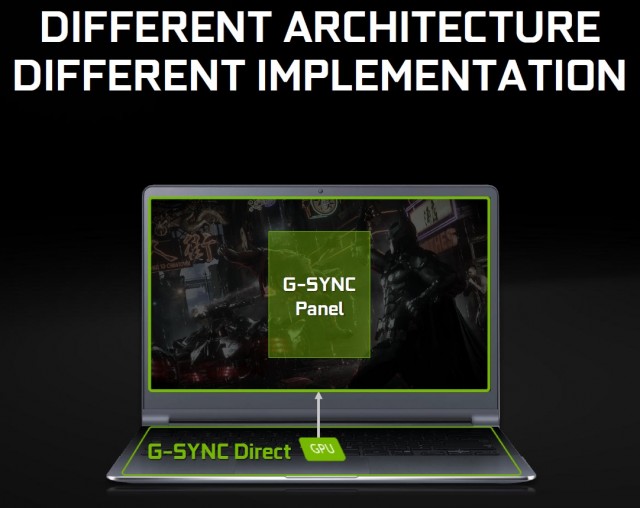Testing mobile G-Sync with the Asus G751JY: Boutique gaming’s killer feature?
Testing mobile G-Sync with the Asus G751JY: Boutique gaming’s killer feature?
Last January, we previewed how mobile G-Sync might perform on an Asus G751JY laptop that wasn’t fully certified for the feature but supported it well enough to give us a taste of what G-Sync could deliver. Today, we’re revisiting the topic, armed with a fully certified Asus G751JY-DB72. This system is nearly identical to the G751JY that we tested earlier this year, but with a handful of upgrades. Specifically, the G751JY-DB72 uses a Core i7-4720HQ CPU, 24GB of DDR3, a 256GB SSD, and a backup 1TB HDD for conventional mass storage. The system still uses a GTX 980M (4GB of RAM) and a 1,920-by-1,080, 17.3-inch screen.
At $1999 from Asus, it’s not a cheap laptop, but it’s one of the nicest and best-balanced systems I’ve ever tested. Because mobile G-Sync is a big enough feature to warrant its own treatment, we’re going to discuss the laptop’s performance and capabilities in a separate piece. For now, it’s enough to say that this is one of the best boutique laptops I’ve ever tested, even if the base model debuted a year ago.
How mobile G-Sync works
Mobile and desktop G-Sync accomplish the same goal, but they achieve it in different ways. Nvidia’s desktop G-Sync displays rely on a separate, Nvidia-built scaler unit. This scaler controls the monitor’s timing and synchronizes the display’s output with the video card. In 2013, when Nvidia debuted G-Sync, its custom scaler technology was the only way to achieve this kind of synchronization in a desktop display. That’s since changed with the launch of the VESA-backed Adaptive Sync standard (AMD calls its own implementation FreeSync). Laptops, however, don’t require custom scaler hardware — the ability to synchronize refresh rates is part of the embedded DisplayPort specification that both AMD and Nvidia use.
As the name implies, variable overdrive allows the display to decrease pixel ghosting by anticipating what color a pixel may need to be on the next refresh cycle and adjusting voltage accordingly. Nvidia has noted that this could result in a slight decrease in color accuracy in some conditions, but the net result should still be improved color reproduction.
G-Sync: A Goldilocks solution:
Now that we’ve covered the basics of how mobile G-Sync works, let’s talk about its specific implementation in the Asus G751JY. This laptop uses a 75Hz panel, which is important to know, because it specifies the maximum refresh speed at which G-Sync can operate. If you have a 75Hz panel and your game is kicking out a steady 200 FPS, G-Sync disables automatically and the game will switch to either V-Sync on or off. By default, NV switches to V-Sync on, since this is much less jarring then the sudden appearance of tearing, but if you prefer to disable V-Sync when the frame rate exceeds 75 FPS, you can specify that at the control panel.
This might seem less-then ideal, since gamers are typically taught to prefer high frame rates, but the relative advantage of faster FPS is subject to diminishing marginal returns. The higher the frame rate, the less visible a missed frame is.
If the frame rate falls below a certain level, however, G-Sync can run into another problem. While it doesn’t shut off due to low FPS, the GPU will automatically interpolate and insert multiple frames to smooth playback. If performance is relatively steady, this is an excellent way to smooth the game without impacting playability. If the frame rate is changing significantly from moment to moment, however, some frames will end up repeated and some will not.
PC Perspective wrote an excellent report on how FreeSync and G-Sync handle low frame rates. The graph below shows how G-Sync inserts additional frames, boosting the refresh rate as a result.
As the frame rate fluctuates, the number of frames G-Sync injects to smooth presentation can vary as well. While the end result can still be superior to not having G-Sync on at all, a variable frame rate below ~35 FPS doesn’t produce the buttery smoothness that Adaptive Sync and G-Sync provide at higher refresh rates.
This ideal window is why we call G-Sync (and Adaptive Sync) a Goldilocks solution. Both technologies work best when your frame rate is neither too high nor too low. In this case, users should target an average consistent frame rate between 40 and 60 FPS.

























0 comments: